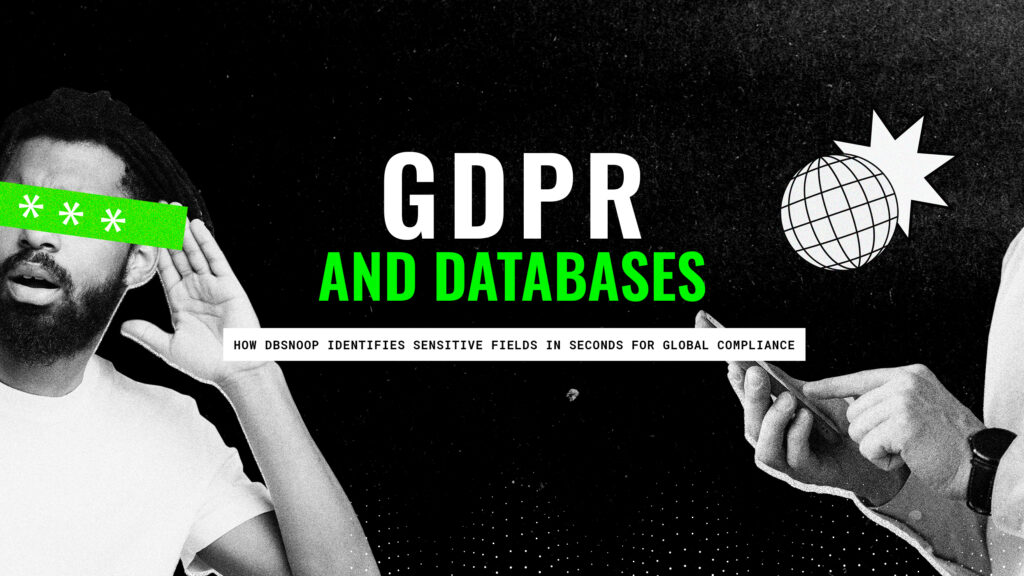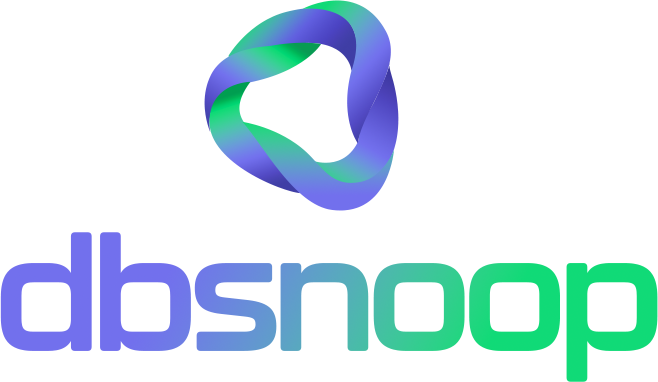

Compliance with GDPR (General Data Protection Regulation) and other global data protection laws isn’t just a legal obligation; it’s a security and reputation imperative for any company handling personal data. The challenge lies in a critical point: how do you identify, map, and protect all sensitive fields scattered across a complex, dynamic, and often massive database, especially in cloud environments? Manually searching for information like social security numbers, credit card numbers, emails, or health data is an exhaustive, error-prone process that consumes valuable time and resources.
But what if this monumental task could be automated and executed with surgical precision, in a matter of seconds? dbsnOOp transforms the nightmare of sensitive data identification into a simple, efficient routine. This article delves into our Artificial Intelligence’s ability to scan, profile, and classify sensitive fields in your database, ensuring not only GDPR compliance but also elevating the security and data management level of your entire operation.
The Hidden GDPR Challenge: Why Finding Sensitive Data Is So Difficult
GDPR and similar regulations require companies to know exactly where their personal data is stored, how it’s processed, and who has access to it. It sounds simple in theory, but in practice, it’s a labyrinth:
- Volume and Complexity: Modern databases, especially in the cloud, contain terabytes of data distributed across hundreds of tables and columns. Manually identifying every field that might contain sensitive personal data is unfeasible.
- Generic Column Names: A column named “info” or “details” could hide highly sensitive information. The column name doesn’t always reflect the content.
- Masked or Encrypted Data: Although protected, this data still needs to be mapped for compliance.
- Constant Evolution: New fields and tables are continuously added, requiring constant monitoring and remapping.
- Human Error Risk: Manual scanning is exhaustive and susceptible to failures, leaving critical gaps for audits and, worse, for data breaches.
Failure to identify and protect sensitive data can result in exorbitant fines, irreparable damage to brand reputation, and loss of customer trust.
The dbsnOOp Revolution: AI That Sees the Invisible in Your Data
dbsnOOp tackles the GDPR challenge head-on, using its advanced Artificial Intelligence to scan and classify sensitive data with a speed and precision that surpass any manual method. It’s not about a simple keyword search, but a contextual and intelligent analysis of the content.

The AI Engine: How dbsnOOp Identifies with Surgical Precision
dbsnOOp’s ability to identify sensitive fields lies in a robust AI engine that combines various analysis techniques:
Pattern and Content Analysis:
- AI isn’t limited to column names. It analyzes the actual content of the data in each field. For example, it can recognize patterns of social security numbers, credit card numbers (even if masked), email addresses, phone numbers, and birth date formats, regardless of the column name.
- It uses advanced regular expressions and pattern recognition algorithms to identify specific types of personal information.
Natural Language Processing (NLP) and Semantic Context:
- For textual data, AI employs NLP to understand the semantic context. If a column contains health descriptions or ethnicity information, even without a standard format, AI can infer its sensitivity.
- It correlates the content of one column with other columns in the same table or in related tables to build a richer and more precise context.
Continuous Learning and Adaptation:
- dbsnOOp’s AI continuously learns and adapts to your organization’s data patterns. As new data types are inserted or the schema evolves, AI refines its identification capabilities, ensuring that sensitive data mapping is always up-to-date.
- This means that even if your team adds a new field without proper classification, dbsnOOp can automatically detect it as sensitive.
Comprehensive Cloud Scanning:
- dbsnOOp is designed to operate in distributed cloud database environments. It can scan and profile data across multiple instances, regions, and database types (MySQL, PostgreSQL, SQL Server, etc.), providing a unified view of all sensitive data in your infrastructure.
Beyond Identification: Sensitive Data Management and Proactive Security
Identifying sensitive fields is the first step. dbsnOOp goes further, transforming this information into concrete actions for data management and security:
- Automated Compliance Reports: Generate detailed reports on the location and type of sensitive data, essential for GDPR and other privacy regulation audits.
- Risk Prioritization: With complete mapping, your team can prioritize the protection of the most critical data, implementing stricter access policies, encryption, or anonymization where necessary.
- Actionable Security Insights: dbsnOOp can alert you about unusual access to sensitive fields or query patterns that indicate a possible security breach, allowing for a quick response.
- Cost Optimization (and Compliance): By identifying sensitive data, you can refine retention and archiving policies, moving non-essential data to cheaper storage or deleting it according to GDPR guidelines, optimizing cloud costs.
- Facilitating Data Subject Rights: With precise mapping, responding to data subject requests (such as access, rectification, or deletion) becomes a much faster and more efficient process.
dbsnOOp transforms the complexity of GDPR into a manageable process, ensuring your company is not only compliant but also maintains a proactive data security posture.
The Real Impact: GDPR Simplified, Security Enhanced
dbsnOOp’s ability to identify sensitive fields in seconds isn’t just a technical feature; it’s a strategic solution that directly impacts your business’s health and reputation:
- Accelerated Compliance: Reduce the time and effort needed to meet GDPR requirements, avoiding fines and sanctions.
- Risk Reduction: Minimize the attack surface and the risk of sensitive data breaches, protecting customer trust and brand reputation.
- Operational Efficiency: Free your DBA, DevOps, and SRE teams from manual and repetitive tasks, allowing them to focus on innovation and strategic optimization.
- Total Visibility: Gain a clear and up-to-date understanding of where your sensitive data resides across your entire cloud database infrastructure.
dbsnOOp is the tool that empowers your organization to navigate the complexities of GDPR with confidence, transforming a challenge into a competitive advantage.
Want to see dbsnOOp’s AI identifying sensitive fields in your database in seconds? Schedule a meeting with our specialist or watch a practical demonstration!
Schedule a demo here.
Learn more about dbsnOOp!
Learn about database monitoring with advanced tools here.
Visit our YouTube channel to learn about the platform and watch tutorials.


